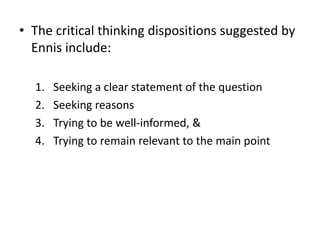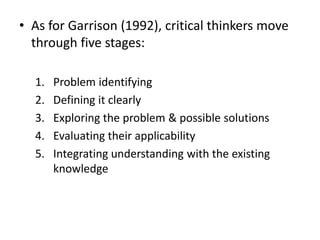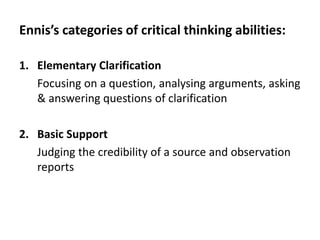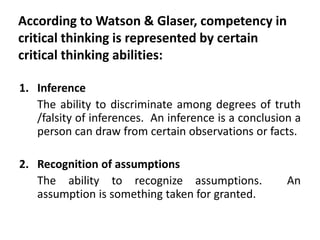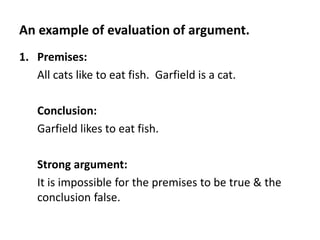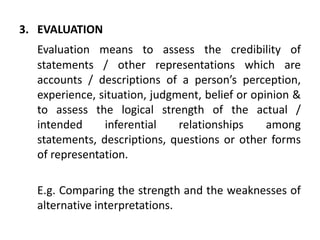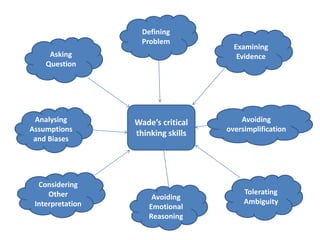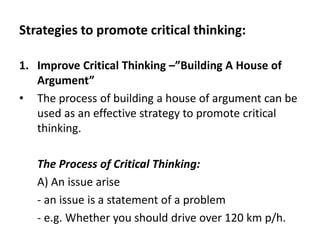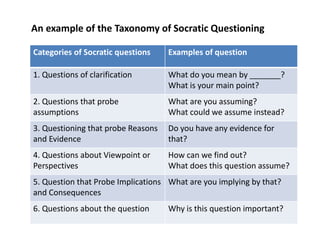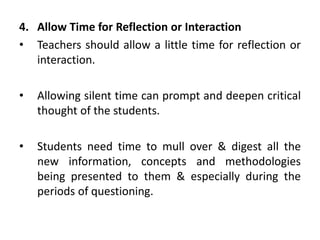This document discusses various theories and models of critical thinking. It begins by defining critical thinking as making reasoned judgements according to different scholars. It then examines three perspectives on critical thinking:
1) The philosophical perspective views it as a logical process involving skills like analysis, evaluation and inference. Models include Ennis's 12 abilities and Watson and Glaser's composite of attitudes, knowledge and skills.
2) The psychological perspective sees it as involving metacognition, recognition, and knowledge acquisition. Sternberg's model includes metacomponents, performance components and knowledge acquisition.
3) The educational perspective exemplified by Bloom's Taxonomy positions evaluation as the highest level of critical thinking skills. A cyclic model









